Want to know how to remove labels from bottles? If you want to know how to remove sticker residue, then follow these easy steps.
How To Remove Labels From Bottles In 5 Easy Steps
Have you ever been cleaning out a bottle or jar to throw into the recycling bin and thought, “This is pretty cute! It’s a shame it’s got this big label on it”? Then you try to scrape it off only to be bested by all the sticky residue left behind and end up tossing it. No more! Here’s a sure-fire way to get rid of pesky labels so you can reclaim those bottles for some upcycled splendor.
What You'll Need:
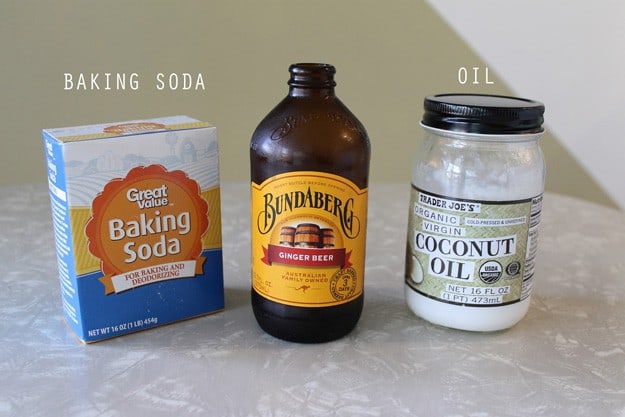
- baking soda
- oil of your choice
How to Remove Labels From Bottles:
Step 1: Soak Bottles In Warm-Soapy Water
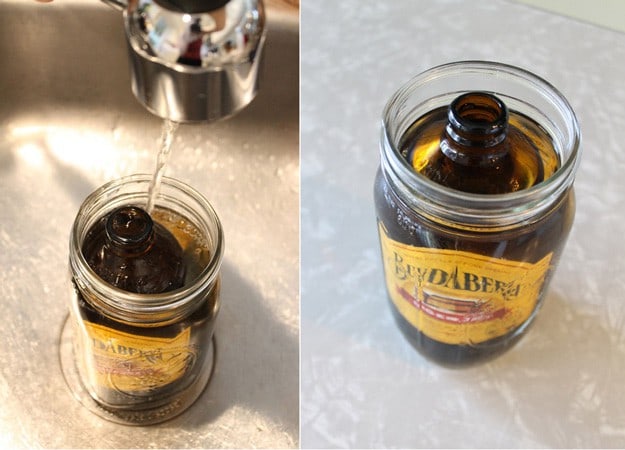
If you’re removing a few at a time, you can soak them in your sink. If you’re only doing one at a time and don’t want to waste all that water filling up your sink (or live in Drought-ifornia), just place the bottle in a larger cup or container. Plus, this way you can pour leftover water into house plants!
Fill both the bottle and the container with water so the bottle is completely submerged. Leave the bottles to soak for at least an hour. You want the label to get pretty soggy, which makes it easier to remove.
Step 2: Peel Off
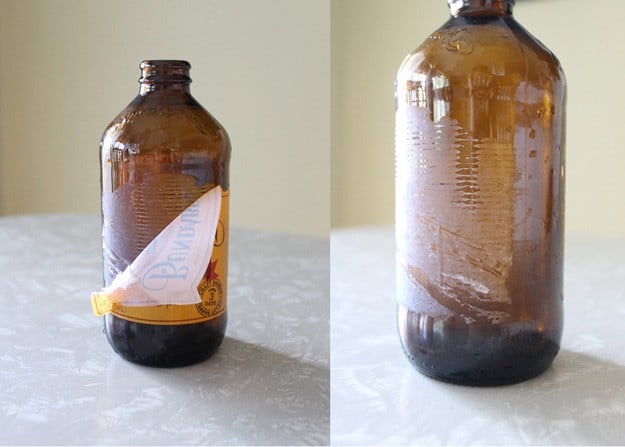
Peel off as much of the label as you can. There will be some stickiness left over. Try not to let the sticky part dry before the next step. If it does, just run it under some water to make it easier to scrub off.
Step 3: Make A Paste
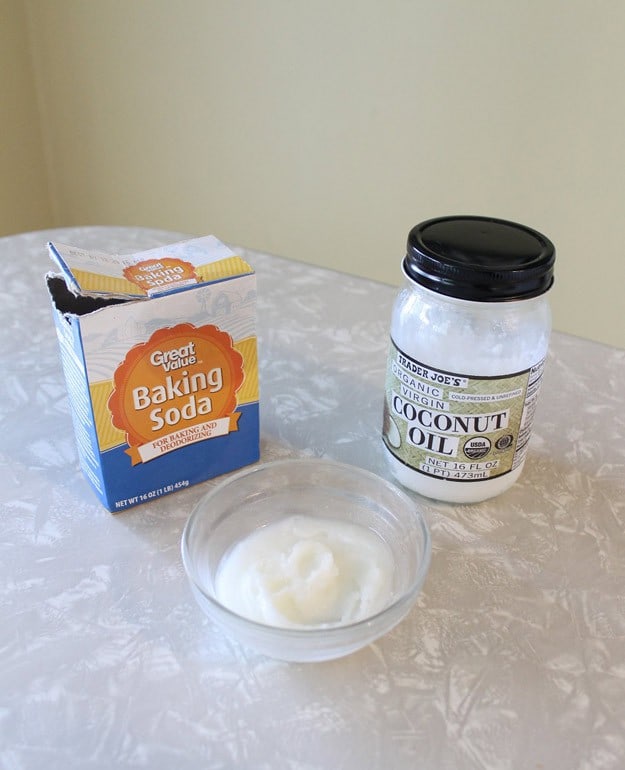
Make a paste of equal parts oil and baking soda. I prefer to use coconut oil, but other oils can be substituted. Depending on how many bottles you’re working with, start with 1 tablespoon of each and increase as needed.
Step 4: Work The Paste Over Label Residue
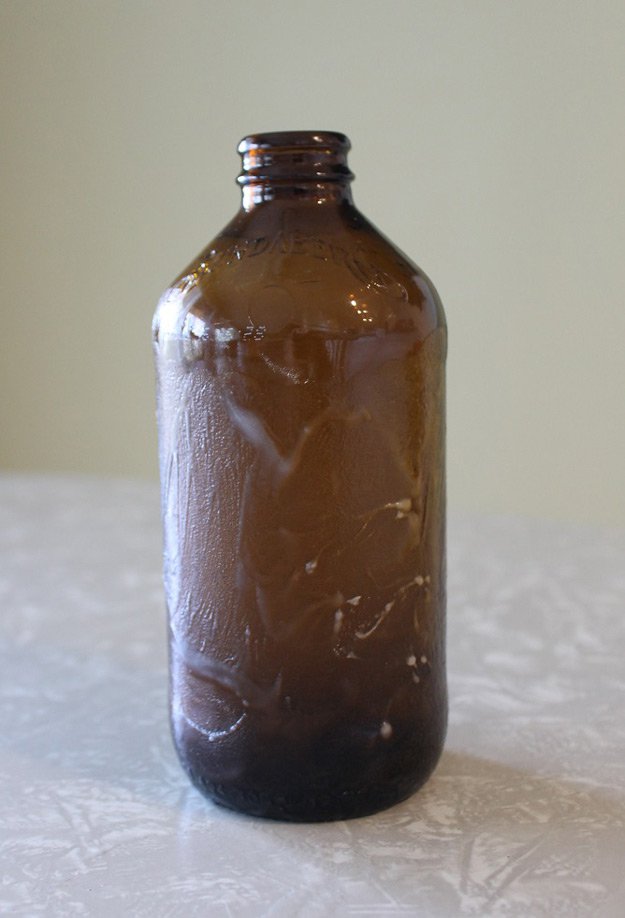
Using your hands, work the paste over label residue. You can also use one of those green scrubbers. The oil breaks down the stickiness while the baking soda provides light abrasion to rub it away. The paste can also be used to remove the dates stamped on bottles.
Step 5: Wash And Dry
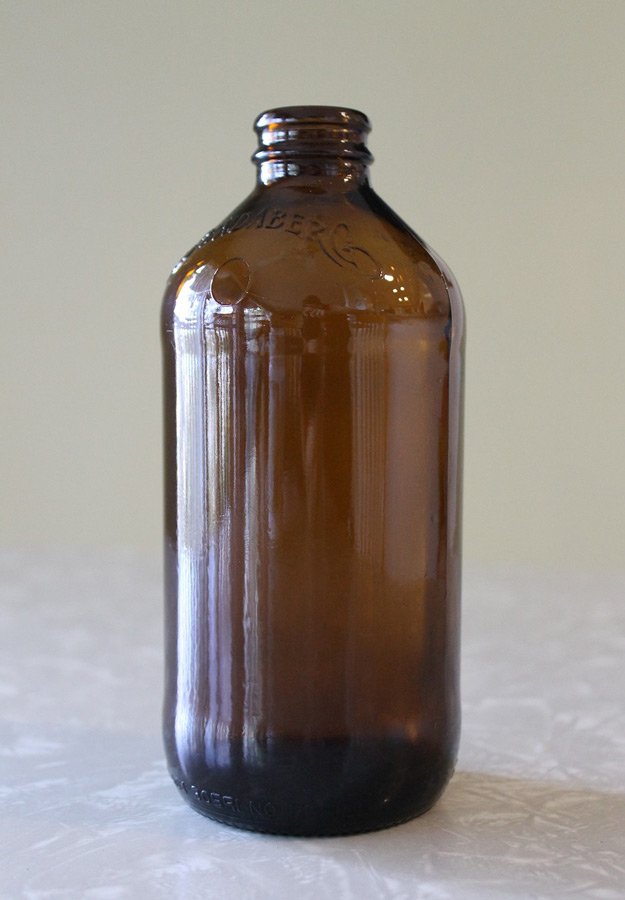
Once everything is removed, wash your bottle in warm soapy water and dry. Then, your bottle is now ready for any bottle DIY projects you have in mind!
Still Struggling? Here’s a very helpful video from redwinebuzz:
That’s it! No more tossing beautiful bottles. I like to gather a few small ones and group them together to use as centerpieces or in place of one large vase. Happy de-labeling!
What do you think of these steps on how to remove labels from bottles? Will you give it a try? Let us know in the comments section below.
Up Next: DIY Natural Household Cleaners | 5 Amazing Homemade Solutions
Follow us on Facebook, Instagram, Pinterest, and Twitter!
Editor’s Note – This post was originally published on November 2015 and has been updated for quality and relevancy.


Appreciate the article. I have tried the ‘goo-gone’ and such copies which produces and even bigger mess and I don’t like to get that stuff on my hands.
I need several dark stained glass bottles because I make my own Silver Hydrosol, 10 ppm. In case you don’t know what that is, it is silver ions suspended in distilled water.
Silver is a great antibiotic and antiviral and has been used for a long time – the miners in the California Gold Rush days put a silver coin in their water bucket to kill the bugs.
The Hydrosol is a modern improvement over colloidal silver. The latter is particles of silver vs the ions in the hydrosol. The ions reduce to almost nothing the danger of the silver changing the color of your skin as happened with the colloid. A commercial silver manufacturer of says that 178,850 doses of 10 ppm over 70 years is safe.
It can be taken by mouth, breathe the mist using a nebulizer or applied to the skin for cuts, etc. It is great to prevent colds, flu, etc. Use a little as a mouth wash to kill the bacteria that causes cavities, spray in your nose to prevent sinus infections, colds etc.
Even put some on your scalp to kill dandruff. Oh, it does NOT kill the probiotics in the intestines as antibiotic drugs do.
Unless you are worried about paint removal, and until it runs out, Mean Green works great on 99% of labels. But I really like that this uses common household products that most everyone has lying around . Thanks for your site!
A much easier way to remove label residue is with WD-40 spray rub wipe and your done.
I will have to try this method. Some labels come off so easily while others could seemingly remain on the bottle after fire, flood or total destruction of the planet. Personally, I think manufacturers should stop using such strong glues on them. In the majority of cases, it is not needed. Even better, I wish that glass jars were ALL made to accept standard Mason jar lids. I think a lot more people would be inspired to save and use their jars if this were the case. They could be used for canning with the Mason jar lids or if you wanted to use them for storage, you wouldn’t be stuck with the manufacturers lid with advertising etc. on it.
The old jars would work well for storage but you should never use food jars for canning. While it can be done there is a very great likelihood that the jars you purchase food in will break when re-using them as canning jars because they are not made to withstand repeated re-use.
I’ve used oil to soften adhesive and then use a plastic card (credit card or one that comes in junk mail) to scrape it off. Next time I will try using soda after I’ve scraped off the adhesive to take off any remaining and to soak up the oil.